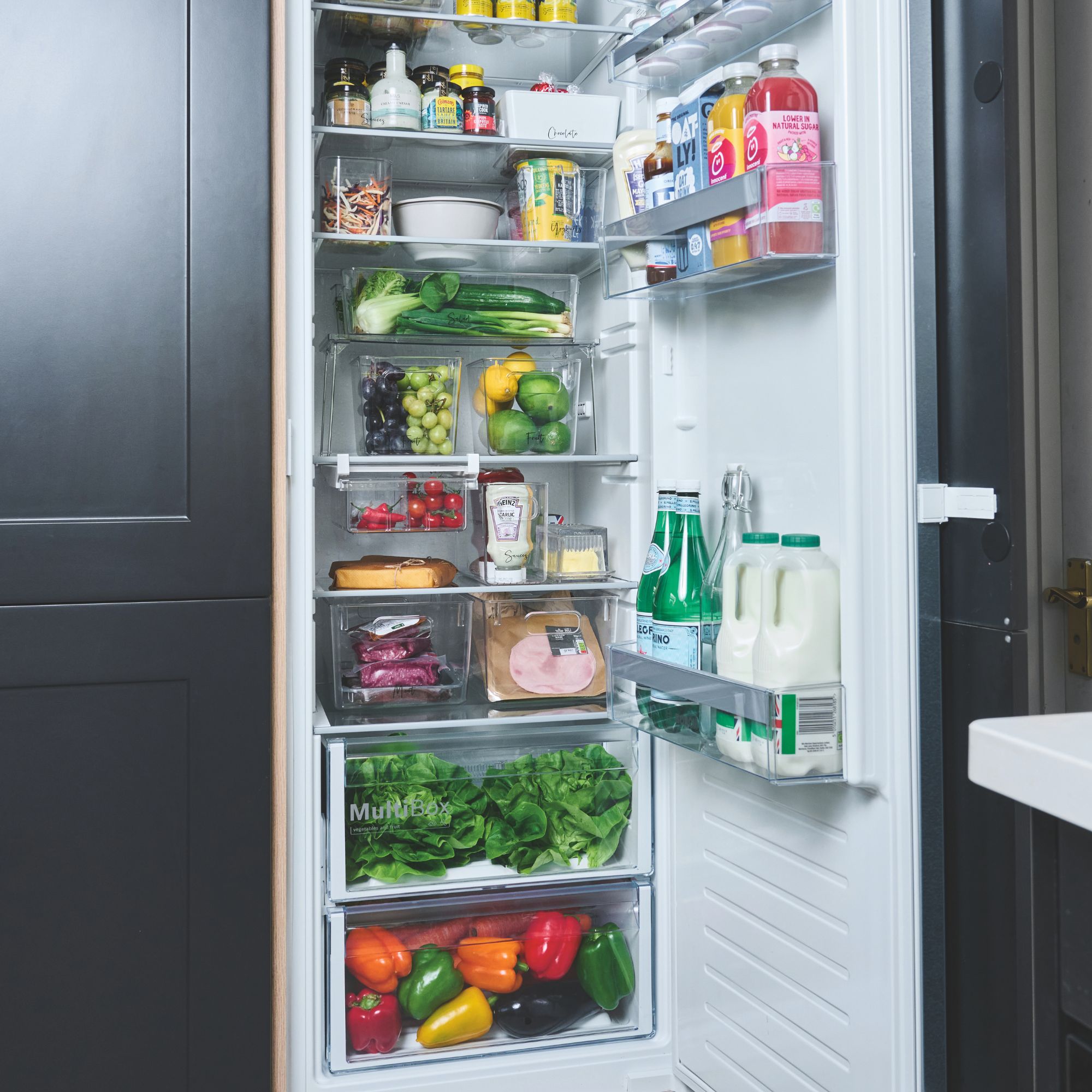
You probably don’t go a day without opening your fridge at least once. From grabbing the milk for your cereal to the meat for your dinner, you might even go rogue and store your chocolate there. But if you’ve ever spotted excess water and wondered why your fridge is wet inside, rest assured you're not alone.
While you might know how to clean a fridge, washing the shelves and vacuuming the seal (yes, you should be doing that regularly!) often isn’t enough to prevent the wetness from occurring. And if you let this wetness build up for too long, it will ultimately affect your food too.
But why does a fridge get wet inside and how do you prevent it? We spoke to the experts about the five common reasons why a fridge gets wet and what you can do to fix it. You don’t want the condensation affecting your fridgescaping, after all…
1. Your fridge is the wrong temperature
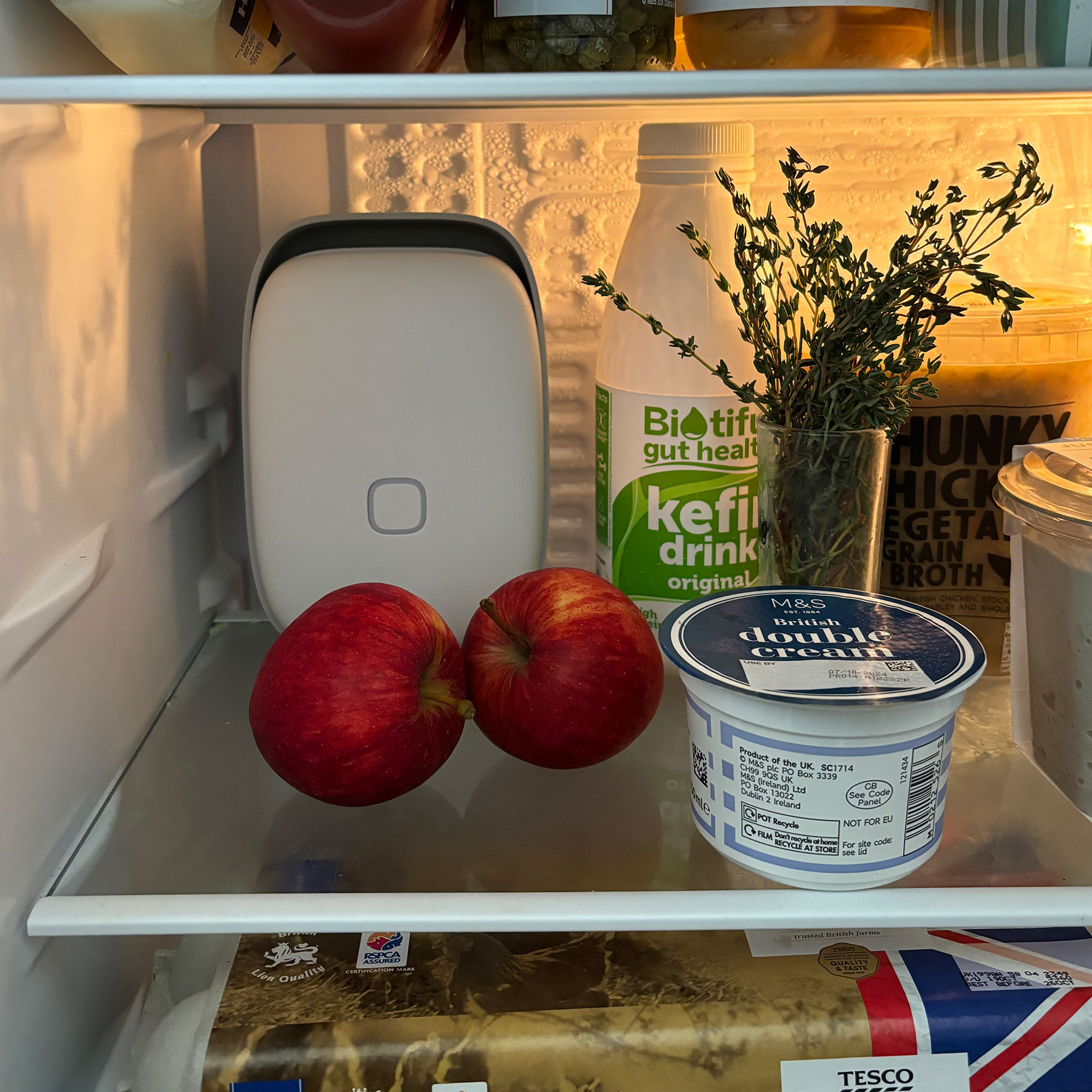
You might not have paid much attention to what temperature a fridge should be set at before, but this is pretty important information. The reality is that the wrong fridge temperature can lead to excess condensation and make your fridge wet inside. This is especially true if you have set your temperature too low.
Michael Forbes, Lead Product Trainer at AEG, says, ‘We advise the average household fridge freezer should be at a near constant temperature between 0°C and 5°C.’
As well as making your fridge wet, the wrong fridge temperature can also affect the quality and freshness of your food - and our Deputy Digital Editor, Rebecca Knight, realised that for herself when she tested the Vitesy Shelfy Smart Refrigerator Device.
The Shelfy won't just solve your temperature issues, but it will also extend food freshness and ultimately reduce food waste.
2. The drainage hole is blocked
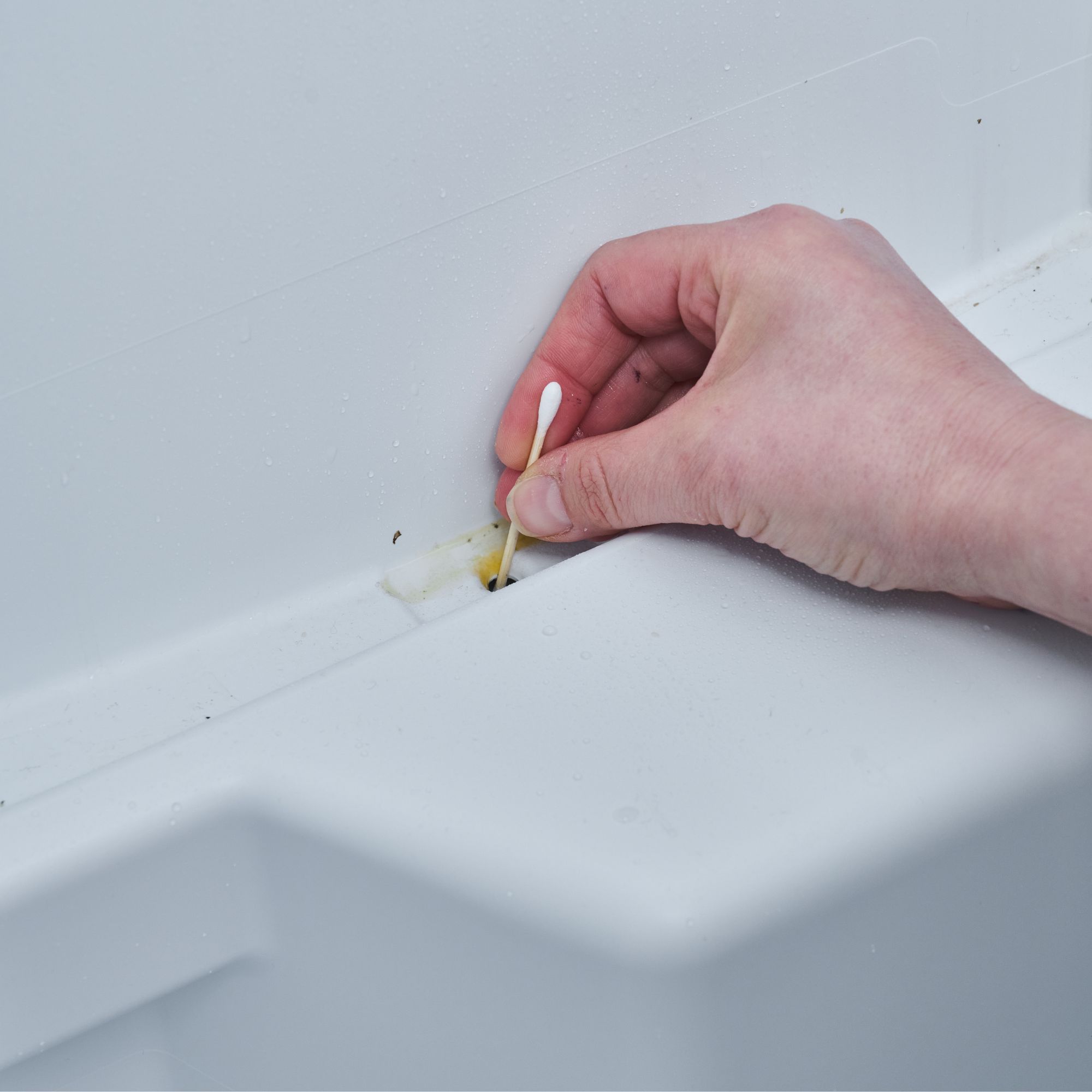
Every fridge has a drainage hole at the bottom of it. The main aim of this drainage hole is to prevent water buildup and maintain the fridge's performance. So, your fridge being wet may be the result of a clogged or blocked drain.
You should always check your drainage hole regularly anyway, but If you notice your fridge is wetter than normal, it's worth checking the drainage hole is free and clear.
Sarah Heaps, refrigeration expert at AO.com, explains, ‘Locate your fridge drain hole (which is often at the back or bottom) and use the warm soapy water to give this a clean to clear out any clogged debris.’ If you can't see or clear a blockage, it may be that you need to use specialist tools, like the below, or call a professional.
If this is a recurring problem, it might be worth checking the position of your fridge, too. If your fridge is not on a flat surface, this may lead to further blockages or condensation. Using a spirit level to determine whether it’s level or not.
This set comes with everything you'll need to clean your fridge, including a syringe, soft pipe, an ice shovel, cleaning brushes and a drain hole plug to reduce condensation.
3. The door seals are damaged
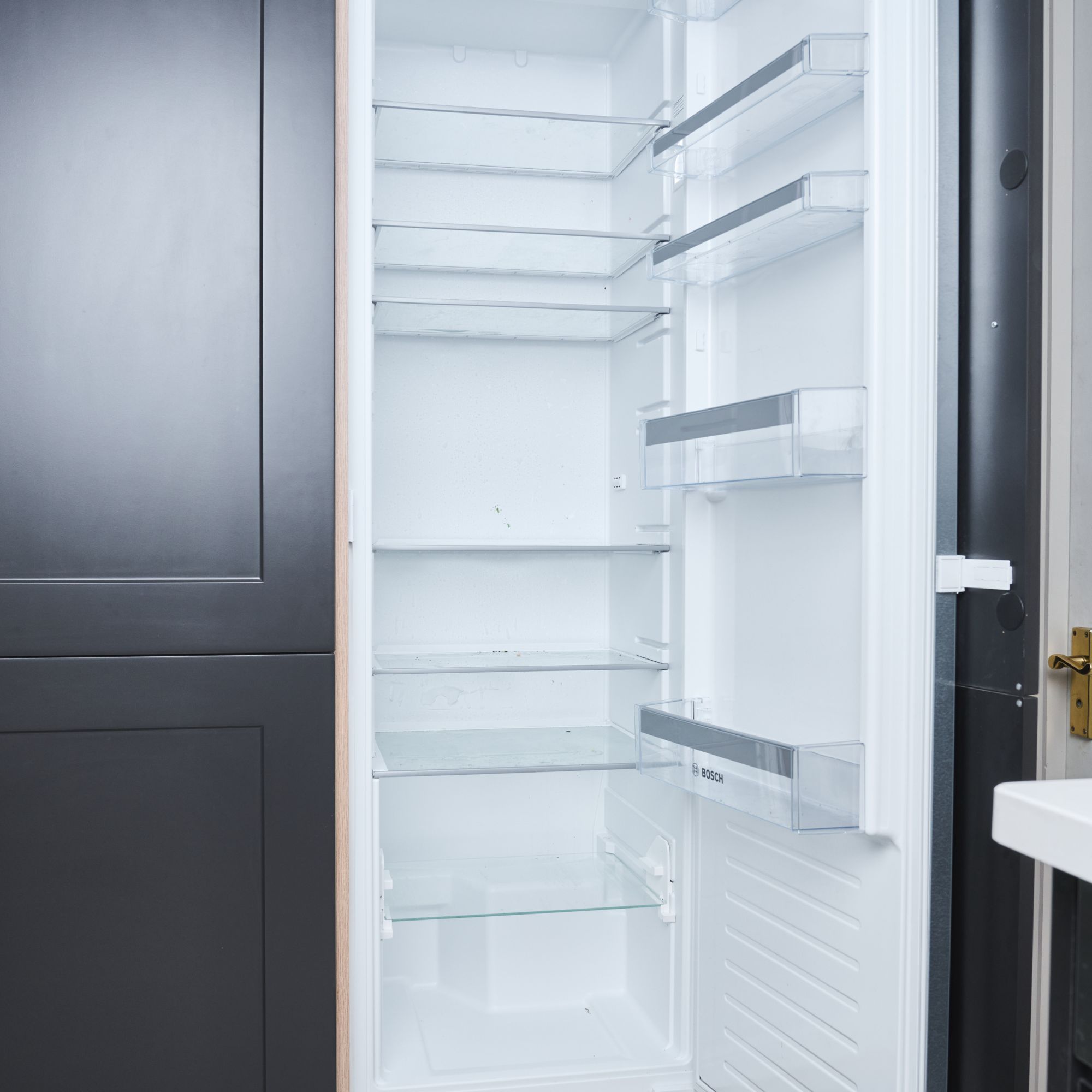
Your fridge relies on effective door seals to keep the cold air in and the warmer outside air out. But if these seals are damaged or even too dirty, they can lead to a build-up of condensation in your fridge.
Sarah says, ‘You can clean this gasket with warm soapy water, yet if this is damaged then you may need to replace it.’ It’s a good idea to inspect the seal for any obvious signs of damage. This could be a hole, a tear, or it could be that the shape has become slightly deformed.
If there are no visible signs of damage, you can try a simple test instead. Grab a piece of paper, keep hold of one side, and then shut the other side in the fridge door. If the door seals are in good shape, you shouldn’t be able to pull the paper out. If the seals are damaged, however, the paper will pull out easily.
If that’s the case, it’s best to replace them as soon as possible. Try to buy seals that suit your specific appliance if you can, but it’s also possible to find universal options out there.
Although it's always better to buy direct from your manufacturer, you can buy universal seals like this - and it'll be made to your exact measurements.
4. You’ve overloaded your fridge
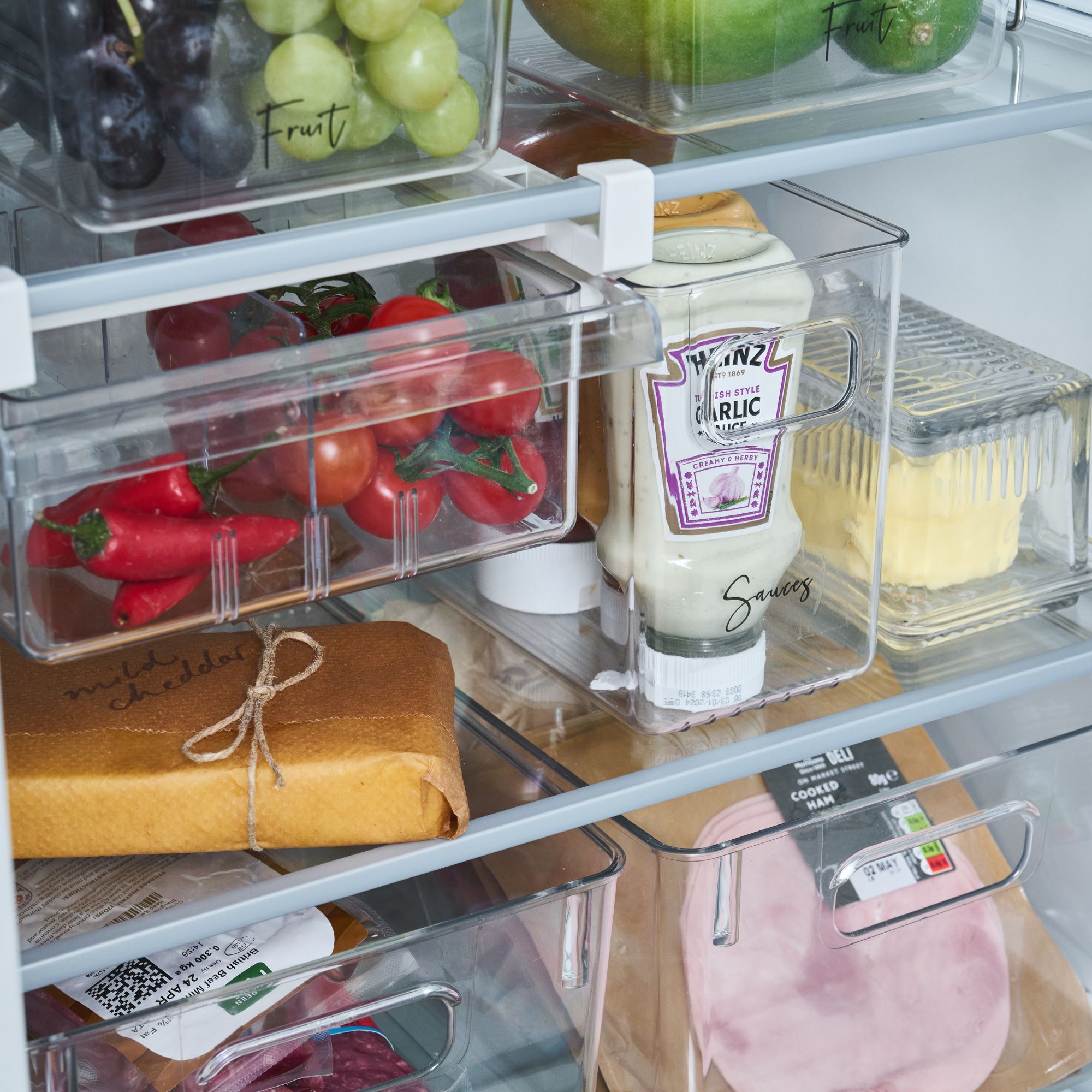
If you notice that your fridge always looks wet shortly after you’ve filled it with your weekly food shop, it’s highly likely that you’ve simply overloaded it with warmer items that need to cool.
This means your fridge has to work overtime to cool all of the contents, and the overloaded food will restrict airflow and ultimately lead to even more condensation. Sarah adds, ‘This means that the cool air cannot circulate properly which can lead to uneven cooling and moisture build-up.’
This can also happen if you put leftovers in the fridge before they have properly cooled. Michael advises, ‘If you're putting food that is still warm into your fridge freezer, once that warm air cools, water droplets will be left behind on the cool surfaces of the fridge freezer.’
To avoid these issues in the future, always wait for warm food to cool before storing it in the fridge. You can also try organising your fridge in a way that allows for constant air circulation. Instead of popping your food straight on the shelves or stacking items on top of each other, try using fridge organisers to help with air flow. It looks more aesthetic, too!
This pack is ideal for basic fridge storage organisation. They can either stand alone or be stacked together to prevent condensation in your fridge.
5. The external temperatures is higher than average

Sometimes, fridge condensation is a seasonal thing, and many people find that their fridge is wet inside during the summer months. This is because the external temperature is higher than average, which means the fridge has to work much harder to keep the internal temperature cool.
Ideally, you should never store a fridge in a room that’s more than 30°C as this will lead to condensation and ice build-up. This will also affect how much it costs to run a fridge.
And while you may be inclined to head to the fridge and grab a cool drink more often when the temperatures rise, Sarah warns that this could cause even more problems. She says, ‘In future, try not to keep the fridge door open for too long. When it is left open for too long, this can affect the humidity with warm air.’
FAQs
How much condensation is normal in a fridge?
A little bit of condensation is completely normal in a fridge, especially during the summer months when the outside temperature is a lot warmer than the inside temperature of the appliance. In fact, this condensation is a sure sign that your fridge is cool and it’s for this reason that fridges have drainage holes.
This drainage hole should stop the condensation from pooling in your fridge, which means that you shouldn’t have to worry. But if you find that the condensation has become so bad that water is pooling on your shelves or making your food wet, this isn’t normal and something that needs to be addressed as soon as possible.
Where is the drainage hole in my fridge?
In modern fridges, the drainage hole can be found right at the bottom of the appliance - normally underneath the salad drawer or compartment. If you have a drawer, you’ll probably need to remove it to find the hole.
Some older fridges don’t have drain holes, but this is typical with much older appliances. If you find that your fridge doesn’t have one, you’ll have to manually remove the condensation and wetness using absorbent towels.
Hopefully, you will now understand why your fridge is wet inside and how you can dry it out!







